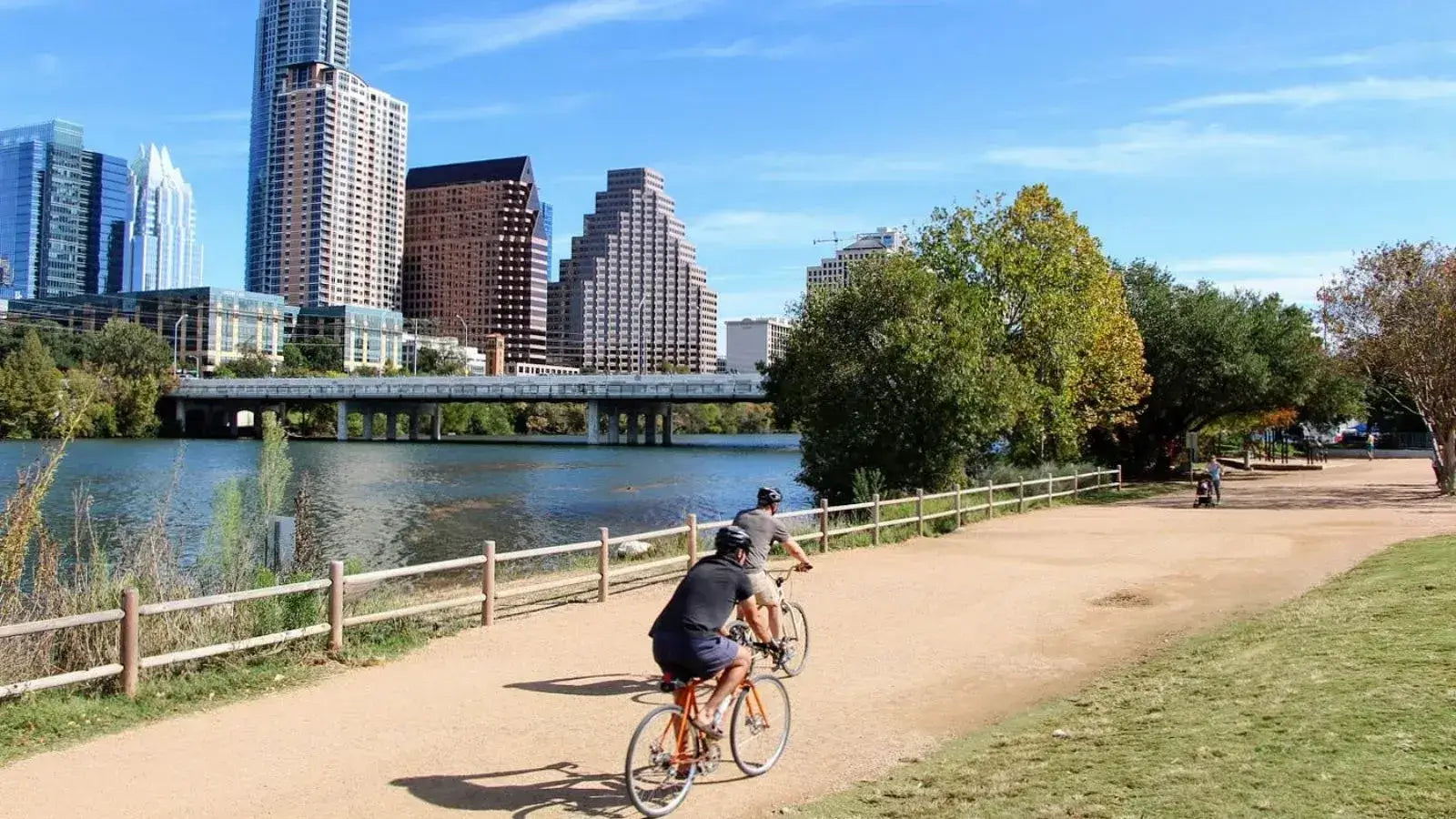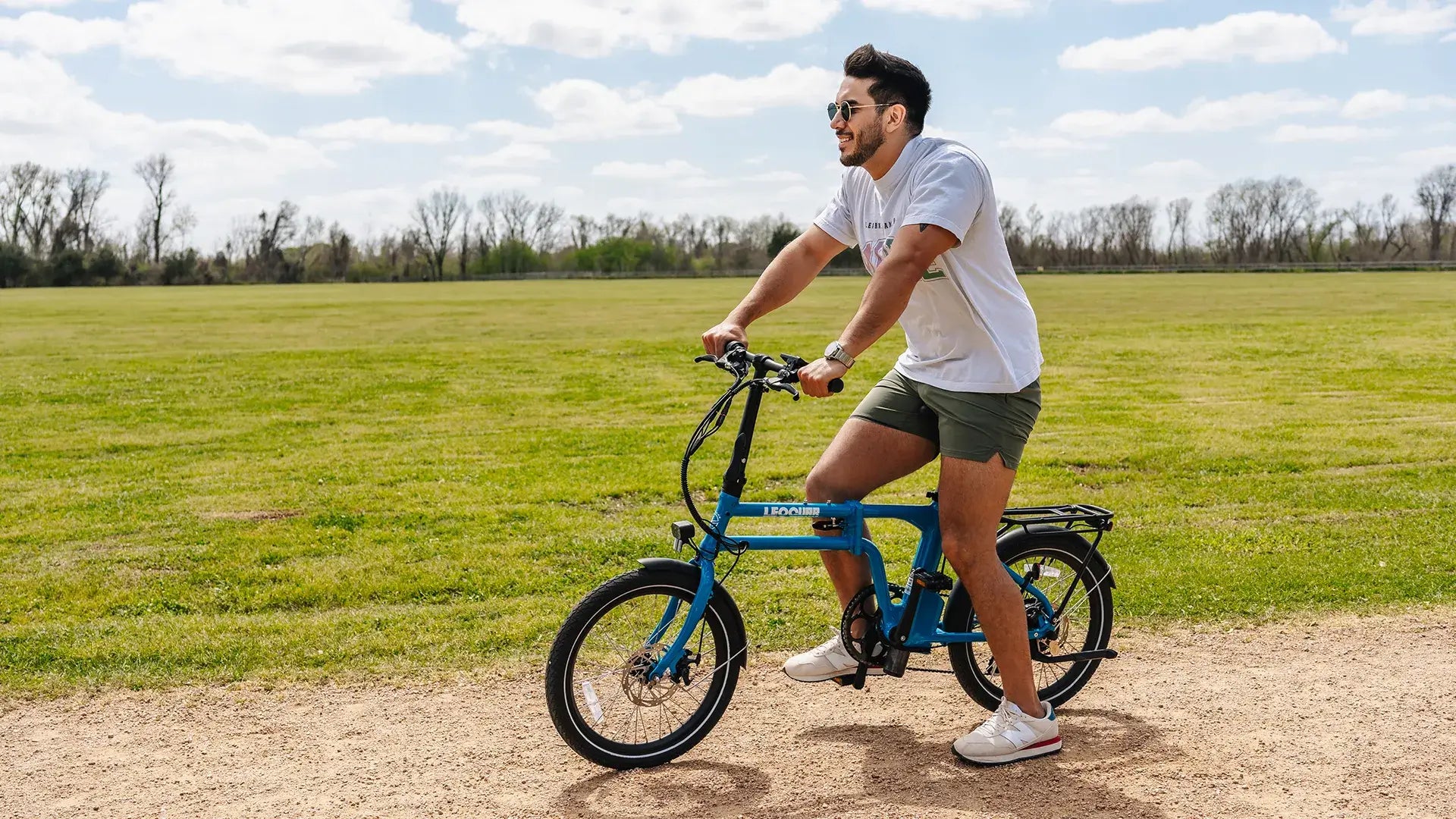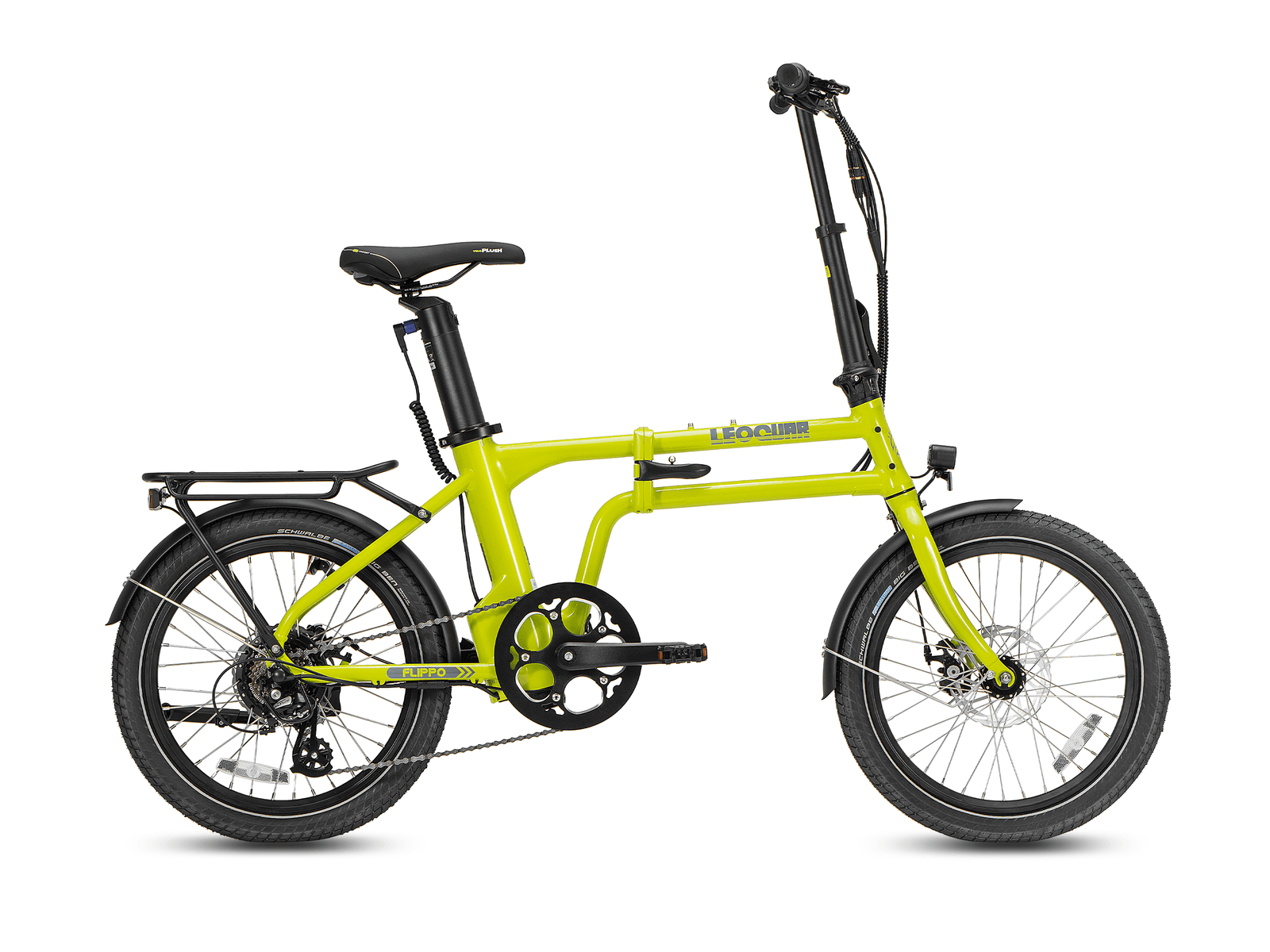
Can Riding a Bike Give You Abs? Muscles Used in Bicycle Riding Explained
Quick Answer: Riding a bike by itself won’t build defined six-pack abs—but it absolutely works your core and helps burn fat to reveal them. So, can riding a bike give you abs? Yes, indirectly! Cycling engages your abs, obliques, and deep core muscles to keep your body stable, but visible abs come mostly from reducing body fat through calorie burn and smart nutrition. Combine cycling with targeted ab exercises and a healthy diet to get strong, defined core muscles.
First, cycling is an amazing heart exercise for burning calories and reducing overall body fat. This is the most important step, because visible abs are a result of low body fat percentage. You can have the strongest stomach muscles in the world, but if they are covered by a layer of fat, you will never see them.
Cycling helps you create the necessary calorie deficit to reveal the muscles underneath. Second, cycling absolutely engages your core for stability.
Every moment you're on the bike, your core muscles are working to keep your body steady, providing a solid platform for your legs to generate power. This strengthens the deep stabilizing muscles of your core, which is essential for performance, posture, and injury prevention.
Can Riding a Bike Give You Abs? The Full Body Effort Explained
While it feels like a leg-focused activity, cycling is a true full-body effort. Understanding how the entire system works together is key to appreciating its effect on your core.
As confirmed by a comprehensive breakdown of cycling muscles, the legs are undoubtedly the main engine, but they rely on a stable and supportive frame provided by your core and upper body. The muscles used in bicycle riding work together as a team.
The Powerhouse
These are the primary movers, the muscles generating the force that turns the pedals.
Quadriceps: Located on the front of your thighs, these are the dominant muscles in the pedal stroke. They are most active during the downstroke, or the pushing phase, from the 12 o'clock to 6 o'clock position.
Glutes: Your gluteus maximus is a massive power generator. It works alongside the quads to extend the hip during the downstroke, providing a significant amount of your pushing power.
Engaging the glutes properly is a hallmark of an efficient cyclist. Hamstrings: Found on the back of your thighs, the hamstrings are most active during the upstroke, or the pulling phase.
They work to flex the knee and pull the pedal back up from the 6 o'clock to the 12 o'clock position, creating a smoother and more circular pedal stroke. Calves: The gastrocnemius and soleus muscles in your lower leg are constantly working.
They help stabilize the ankle and foot throughout the entire pedal stroke and contribute to power during the final push at the bottom.
The Stabilizers
These muscles don't produce the main propulsive force, but without them, all the power from your legs would be wasted.
Core Muscles: This is where the abs come in. Your core—including the rectus abdominis (the six-pack muscle), obliques (sides), and the deep transverse abdominis—acts as a rigid anchor.
Its primary job is stabilization. It prevents your torso from rocking side-to-side, which would waste energy.
It also ensures that the force you generate in your hips and legs is transferred efficiently to the pedals. Upper Body: Your shoulders, arms (triceps and biceps), and back muscles are also engaged.
They support your body weight, absorb vibrations and shocks from the road, and control steering. Maintaining your position on the comfortable ebike requires constant isometric contraction from these groups.
| Muscle Group | Primary Function in Cycling | Phase of Pedal Stroke |
|---|---|---|
| Quadriceps | Pushing pedals down (knee extension) | Downstroke (12-6 o'clock) |
| Glutes | Powering the push (hip extension) | Downstroke (12-6 o'clock) |
| Hamstrings | Pulling pedals up (knee flexion) | Upstroke (6-12 o'clock) |
| Calves | Ankle stability and final push | Full Stroke |
| Core Muscles | Torso stability, power transfer | Full Stroke |
How Riding a Bike Actively Engages Your Core Muscles
Most of the core work in cycling happens without thinking about it. To get the most out of it, however, we need to move from passive stabilization to active engagement.
This requires focus and specific techniques that can transform your ride and build greater foundational strength. The following methods will help you understand can riding a bike give you abs when done correctly.
The Core Brace
This is the single most effective technique for actively engaging your core on the bike. It's not about sucking in your gut or holding your breath.
Instead, think about gently drawing your belly button in towards your spine, as if you're preparing to take a light punch to the stomach. From firsthand experience, you should feel a sense of tightness around your entire midsection, like you're wearing a natural weightlifting belt.
It doesn't restrict breathing; rather, it creates a solid, stable platform. Contrast this with the feeling of a relaxed, slouching posture where your pelvis tilts and you might feel a dull strain in your lower back after a long ride.
A proper core brace eliminates that strain and locks your torso into a powerful, efficient unit.
Master Your Breathing
Your breath is directly connected to your core. Instead of shallow chest breathing, focus on diaphragmatic or belly breathing.
As you inhale, allow your belly to expand; as you exhale, feel your core tighten. We can use this to our advantage.
Try to coordinate your exhalation with your moments of greatest effort, like the start of a tough climb or a surge in power. As you forcefully exhale, you will feel your core muscles contract and engage more deeply, providing extra stability when you need it most.
Strategic Riding Positions
How you position yourself on the bike can dramatically change the demand on your core.
Standing Climbs: Getting out of the saddle is a fantastic core workout. As you stand, the bike naturally wants to sway from side to side with each pedal stroke.
Your obliques and transverse abdominis must fire intensely to control this sway and keep the bike moving in a straight line. Riding on the Drops: For those with road bikes, getting into the lower, more aerodynamic position of the drops forces your core to work much harder.
It has to support the weight of your torso against gravity without the help of an upright posture, requiring significant endurance from your entire core musculature. A strong, engaged core isn't just for show; it's proven to improve cycling efficiency.
It ensures that every watt of power you produce is directed into the pedals, reducing the wasted energy that comes from an unstable upper body.
The Visible Abs Equation: Does Cycling Alone Work?
Achieving a defined midsection is less about a single secret exercise and more about executing a consistent, holistic strategy. We can think of it as a simple four-part equation.
Getting any one part wrong will compromise the final result.
Part 1: Consistent Caloric Deficit
This is the non-negotiable foundation. Visible abs require a low body fat percentage (typically around 10-12% for men and 16-19% for women).
Cycling is a top-tier tool for achieving this. It's a low-impact activity that can be sustained for long periods, making it ideal for burning a significant number of calories.
To maximize fat loss on bike, vary your riding. Incorporate High-Intensity Interval Training (HIIT) on a stationary bike—like 1 minute of all-out effort followed by 2 minutes of easy recovery, repeated 8-10 times.
Complement this with longer, steady-state endurance rides on the weekend to burn fat and build your aerobic base.
Part 2: Active Core Engagement
This piece of the equation involves putting the techniques from the previous section into practice on every ride. Consciously bracing your core, coordinating your breath, and using different riding positions turns your cycling time into a continuous, low-level core strengthening session.
This builds the deep-seated muscular endurance and stability that serves as the foundation for a strong midsection.
Part 3: Targeted Off-the-Bike Exercises
While cycling strengthens your core for stability, it won't cause the muscular hypertrophy (growth) needed for that chiseled look. For that, you need to perform direct, targeted exercises off the bike 2-3 times per week.
The best exercises for cyclists are those that complement the demands of riding. Plank: This is the gold standard for building endurance in the transverse abdominis, the deep muscle that acts as your body's corset.
Bird-Dog: This move challenges your anti-rotation stability, directly mimicking the balance required to keep your torso still while your limbs are moving on the bike. Leg Raises: These are excellent for targeting the lower portion of the rectus abdominis, an area often undertrained.
Russian Twists: These build strength in the obliques, which are crucial for controlling the bike during standing climbs and sharp turns.
Part 4: Supportive Nutrition
You can ride for hundreds of miles and do thousands of crunches, but you can't out-train a poor diet. The old saying is true: abs are revealed in the kitchen.
Your hard work on and off the bike needs to be supported by a diet that supports getting abs, focusing on whole, unprocessed foods. Prioritize lean protein to help build and repair muscle, complex carbohydrates to fuel your rides, and healthy fats for hormone function.
A clean diet, combined with the caloric deficit from cycling, is what will ultimately lower your body fat and allow your abdominal muscles to become visible.

The Final Verdict
So, is cycling your secret weapon for a stronger core? In many ways, yes.
While it's not a shortcut to a six-pack, it's an indispensable tool in the arsenal of anyone serious about achieving a lean, powerful physique. You cannot spot-reduce fat from your stomach just by riding, nor will pedaling alone sculpt your rectus abdominis.
But what cycling does is arguably more important. It provides an effective and enjoyable method for burning the body fat that obscures your abdominal muscles.
Simultaneously, it builds a rock-solid, functional core that improves your posture, prevents injury, and makes you a more powerful and efficient athlete. When you combine consistent cycling with active engagement techniques, targeted off-bike exercises, and smart nutrition, you create a complete and sustainable system for success.
So, get on your bike. Use it to build your engine and melt away fat, and let it be the cornerstone of your journey to a stronger core and exceptional overall health.
Frequently Asked Questions
1. Q: Can riding a bike give you abs without doing any other exercises?
A: No, cycling alone cannot give you visible abs. While cycling strengthens your core muscles for stability and burns calories to reduce body fat, you need targeted abdominal exercises to build the muscle definition required for a six-pack. Cycling is an excellent foundation, but it must be combined with specific core exercises and proper nutrition for visible results.
2. Q: How long do I need to cycle to see core strength improvements?
A: You can start feeling core strength improvements within 2-3 weeks of consistent cycling with proper core engagement techniques. However, visible changes in your midsection typically take 8-12 weeks or longer, depending on your starting body fat percentage, diet, and whether you're combining cycling with targeted core exercises.
3. Q: What type of cycling is best for core development?
A: Standing climbs, riding in the drops position on road bikes, and high-intensity interval training (HIIT) are most effective for core development. These positions and intensities require greater core engagement for stability and power transfer. Mountain biking on technical terrain also provides excellent core workouts due to the constant balance adjustments required.
4. Q: Do I need to actively think about engaging my core while cycling?
A: Yes, for maximum benefit you should actively engage your core rather than relying on passive stabilization. Use the core brace technique by gently drawing your navel toward your spine, coordinate your breathing with your pedal strokes, and focus on maintaining a stable torso. This conscious engagement significantly increases the core-strengthening benefits of cycling.
5. Q: What muscles used in bicycle riding contribute most to core strength?
A: The primary core muscles used in bicycle riding include the rectus abdominis (six-pack muscle), obliques (side muscles), and transverse abdominis (deep core muscle). These muscles work together to stabilize your torso, prevent side-to-side rocking, and transfer power efficiently from your hips and legs to the pedals. Your lower back muscles also play a crucial supporting role in maintaining proper posture.









































Leave a comment